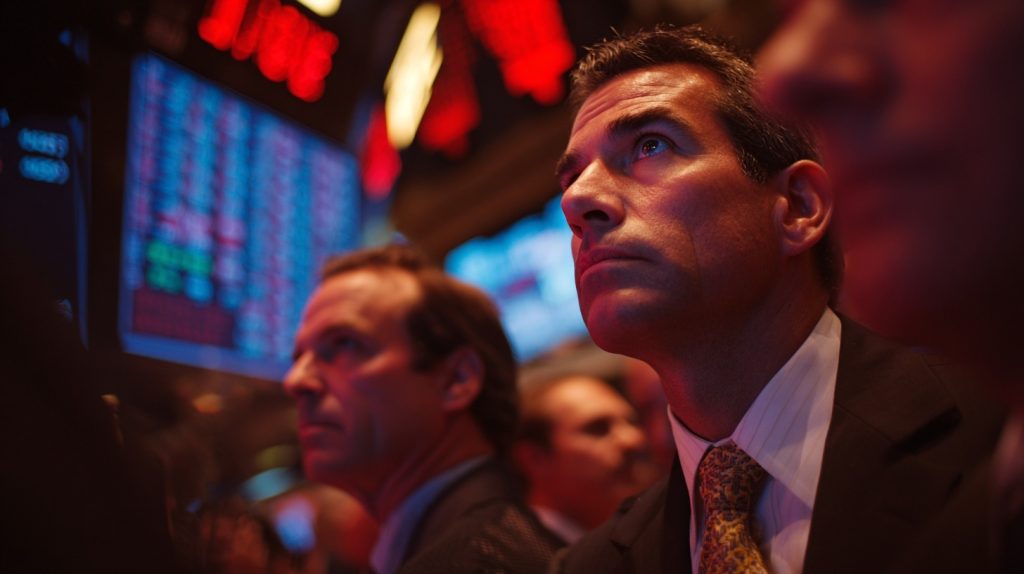
Table of Contents
Jamie Dimon market correction warning has sent shockwaves through Wall Street. The JPMorgan Chase CEO isn’t known for crying wolf. So when he tells investors he’s “far more worried” about a market correction than everyone else, it’s worth paying attention. In recent statements, Dimon has warned that U.S. stocks face a serious correction within the next six months to two years, citing geopolitical tensions and what he sees as dangerously overheated equity valuations that the market refuses to acknowledge.
This isn’t vague hand-wringing. Dimon puts the odds of a significant market correction at roughly 30%, a figure that should make anyone with a 401(k) sit up and take notice. The timing matters too. While the S&P 500 continues hitting record highs, buoyed by AI euphoria and surprisingly resilient GDP growth, Dimon sees cracks where others see bedrock, and his Jamie Dimon market correction warning deserves serious consideration.
The Jamie Dimon Market Correction Warning: Geopolitical Powder Keg Nobody’s Pricing In
Dimon’s concerns aren’t purely technical. They’re rooted in a world that looks increasingly unstable, where the old rules of engagement between nations feel more like suggestions than laws. In his annual shareholder letter earlier this year, he painted a stark picture: the United States could burn through its entire missile stockpile within a single week if conflict erupted in the South China Sea.
Think about that for a moment. One week. For the world’s largest military power to exhaust a critical weapons system in seven days speaks to either woefully inadequate preparation or the scale of conflict modern warfare now demands. Probably both. And yet, equity markets continue pricing in perpetual peace and prosperity, as if Taiwan were just another footnote in the daily news cycle rather than the flashpoint for potential global catastrophe.
The disconnect is striking. Geopolitical risk has become background noise to investors who’ve spent years learning to ignore it. North Korea fires missiles, markets shrug. China conducts military drills around Taiwan, another shrug. But Dimon’s warning suggests this complacency could prove expensive. Defense spending needs to ramp up dramatically, he argues, and that kind of fiscal reorientation doesn’t happen without consequences for corporate profits and government balance sheets.
When The Smart Money Gets Nervous
What makes Dimon’s perspective particularly noteworthy is his position at the center of global finance. JPMorgan isn’t some boutique hedge fund making contrarian bets for attention. It’s the largest bank in America, with tentacles reaching into every corner of the economy. Dimon sees the flows. He knows where money is moving, where credit is tightening, and where risks are building beneath the surface, as detailed in his recent warnings to shareholders.
His track record matters too. Dimon navigated JPMorgan through the 2008 financial crisis better than virtually any other major bank CEO. He’s not a permabear calling for crashes every quarter. When he expresses this level of concern, it carries weight precisely because it’s unusual.
The market correction warning comes alongside another sobering prediction: a potential U.S. recession hitting in 2026. That’s not far off. And it suggests Dimon sees a one-two punch scenario where overvalued equities meet deteriorating economic fundamentals at exactly the wrong moment.
The Bubble That Refuses To Pop
Here’s the thing about bubbles: they’re obvious in hindsight and invisible in the moment. Right now, stocks are “far more overheated” than investors realize, according to Dimon’s assessment. But try telling that to anyone who’s watched their portfolio climb steadily higher. The AI boom has created a new justification for stratospheric valuations. Never mind that most companies haven’t figured out how to actually make money from large language models. The promise is enough.
This feels familiar. Not exactly like the dot-com bubble or the housing crisis, but following that same pattern of rationalization. “This time is different” becomes the mantra, except it never really is. The specifics change. The underlying dynamics don’t.
What Dimon seems to be highlighting is the gap between perceived risk and actual risk. Markets are pricing in a best-case scenario where AI transforms productivity, geopolitical tensions stay manageable, inflation remains controlled, and interest rates settle at comfortable levels. That’s a lot of things that need to go right simultaneously. And the probability of all of them happening looks a lot lower than 70%.
Democratic Institutions And Market Stability
There’s a broader context here that often gets overlooked in market analysis. Stable, well-functioning democracies with strong institutions provide the foundation for long-term investment confidence. When those institutions start looking shaky, when the rule of law feels negotiable, when international cooperation breaks down, markets eventually pay attention.
The geopolitical concerns Dimon raises aren’t just about military readiness. They’re about whether the post-World War II international order that enabled decades of relatively stable global commerce can survive the current moment. Trade relationships built over generations can unravel quickly when trust evaporates. Supply chains optimized for efficiency become vulnerabilities during conflict.
If you’re an investor, these aren’t abstract concerns. They’re the difference between a market that climbs 10% annually and one that drops 30% in a matter of months. The institutional framework matters enormously, and right now that framework looks more fragile than the market is acknowledging.
What A 30% Correction Actually Means

Let’s ground this in practical terms. A 30% market correction from current levels would wipe out roughly three years of gains for major indices. For someone with $500,000 invested, that’s $150,000 gone. Not permanently, perhaps, but gone long enough to matter if you’re nearing retirement or need that capital for major life expenses.
The psychological impact would be significant too. After years of relatively smooth sailing, a sharp correction would shake confidence in ways that ripple through the economy. Consumer spending would pull back. Corporate investment would freeze. The self-fulfilling prophecy of recession would accelerate.
Dimon’s timeline of six months to two years is deliberately vague, but it’s also uncomfortably close. Not some distant 2030 scenario you can safely ignore. Something that could happen before the next presidential election or shortly after.
The Contrarian Case For Optimism
To be fair, plenty of smart people disagree with Dimon’s assessment. Bulls point to strong corporate earnings, resilient consumers, and the transformative potential of AI. They argue that geopolitical risks have been overblown before and markets adapted. The economy has surprised to the upside repeatedly in recent years.
There’s also the fact that calling for market corrections is a low-risk prediction. If you’re wrong, everyone forgets. If you’re right, you look brilliant. Dimon doesn’t particularly need the credibility boost, but it’s worth noting the incentive structure that rewards caution over optimism in public statements.
Still, the specific nature of his concerns, the 30% probability he assigns, and the concrete issues he raises about defense preparedness and geopolitical instability all suggest this isn’t just covering his bases. He genuinely seems worried.
Positioning For Uncertainty
So what’s an investor supposed to do with this information? Sell everything and hide in cash? Probably not. But ignoring it entirely seems equally unwise.
The prudent approach involves acknowledging that risk exists without pretending you can perfectly time the market. That means maintaining diversification, keeping some dry powder for opportunities that arise during volatility, and being honest about your own risk tolerance and timeline.
It also means paying attention to the underlying issues Dimon raises. Geopolitical instability isn’t going away. The South China Sea situation isn’t getting less tense. Defense spending will increase, which means fiscal pressures will build. These are structural trends, not temporary blips.
The market correction warning from Jamie Dimon won’t be the last we hear about elevated risk levels. Whether he’s right about the timing or the magnitude remains to be seen. But the fact that someone in his position, with his track record and his access to information, is expressing this level of concern should at minimum prompt investors to review their assumptions. Because assumptions built during calm waters rarely survive the storm intact.